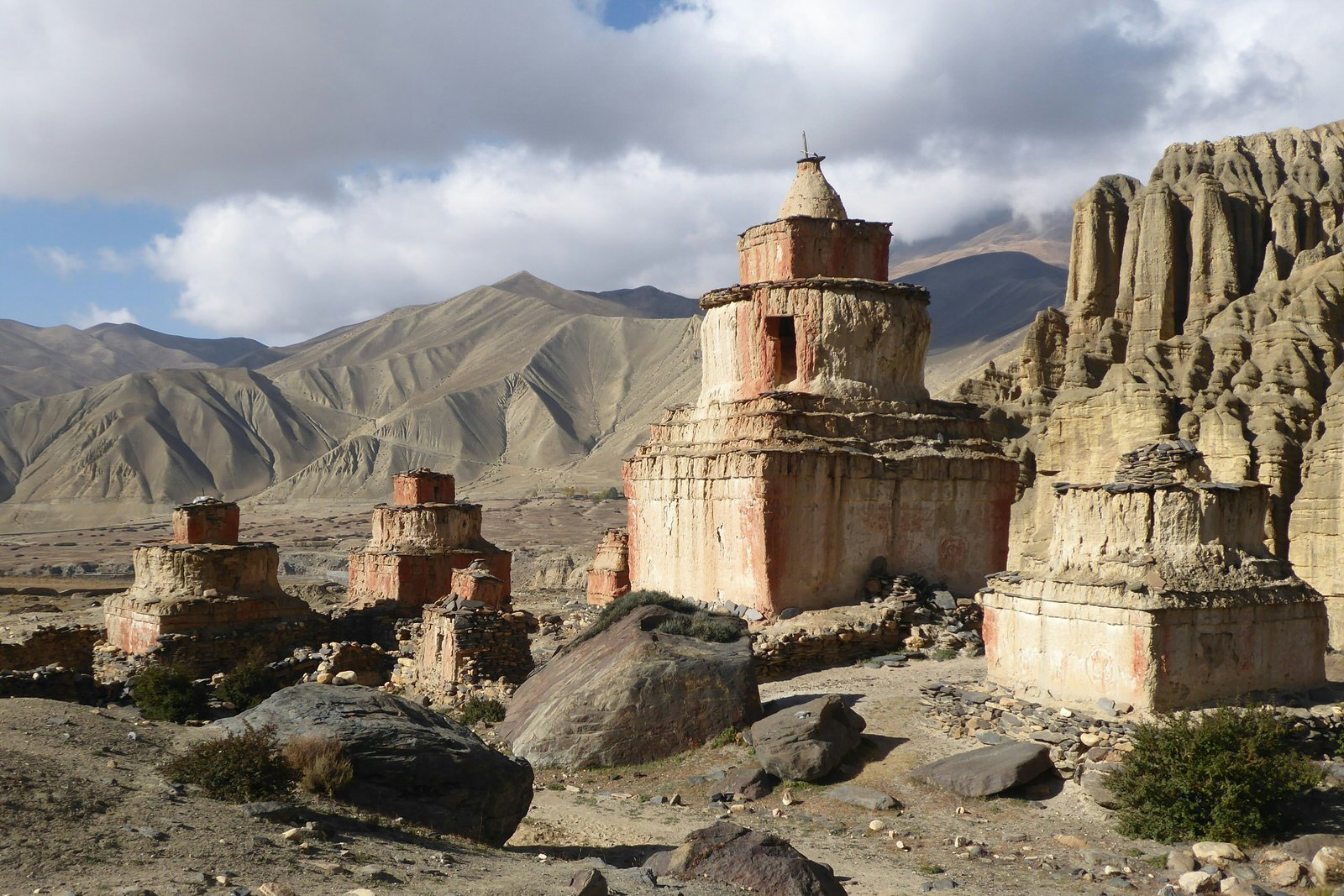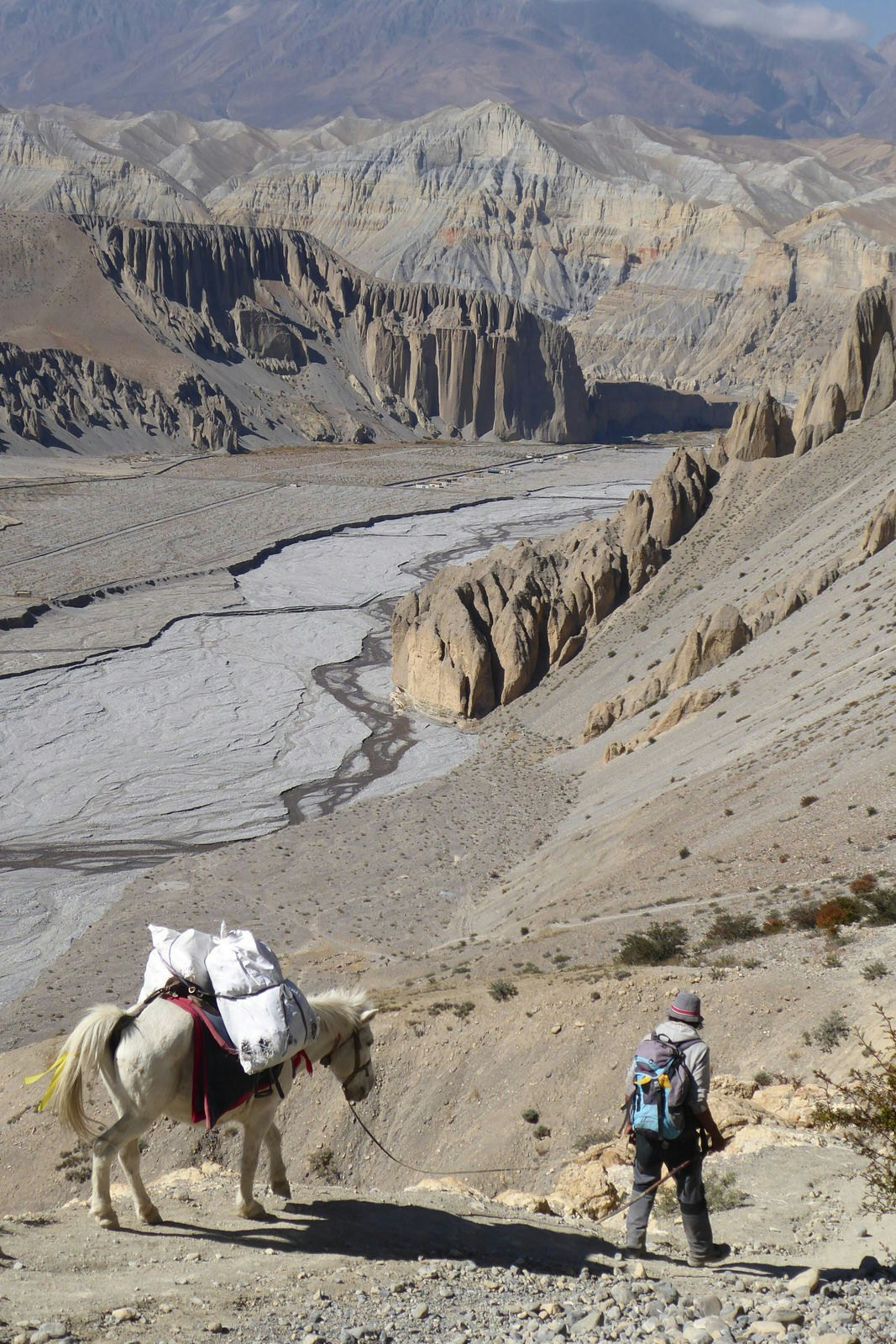
The 30 best countries, cities and regions to visit in 2025

Jul 18, 2019 • 7 min read

If you decide to trek off the beaten path, be careful what you wish for. This insight hits me as my guide, Nyima, motions towards a steep, crumbling cliff and a flimsy looking line of yak-hair rope disappearing down into the abyss. This apparently is the only way down to the hidden Buddhist cave paintings of Konchokling. But I can't give up now. After hiking for days on a razor-edged trail through an eroded maze of bone-dry ravines, gulches and gullies, I'm determined to see what lies at the bottom, so I gingerly lower myself down over the precipice.

Welcome to the former Buddhist kingdom of Mustang, stretching north from the Annapurna mountain range, one of the most dramatic and exotic corners of Nepal. With its stunning landscapes and timeless Himalayan villages, Mustang is the stuff of trekking dreams. High permit fees discourage all but the most determined hikers, but the reward is a landscape of wind-eroded Buddhist chortens (stupas) and echoing ridgelines that stretch wave-like to the horizon. Although each trekking season brings in more of the modern world, for now at least, the Shangri-La image remains intact.

Mustang feels quite different to the rest of the Nepal Himalaya, and geologically speaking it is different. This is the Transhimalaya, a parched piece of ancient seabed thrust skywards and marooned in the monsoon rain shadow north of the main Himalayan range. In culture and topography, Mustang has more in common with the Ngari region of western Tibet than other parts of Nepal.
This shared geography becomes clear on the flight from Pokhara to Jomsom, as my 14-seater plane meanders up the Kali Gandaki gorge, almost scraping the 8000m peaks of Annapurna and Dhaulagiri on a flight in between (rather than over!) the Himalaya. As we land, I prise myself out of my tiny plane seat, buckle up my backpack and begin a two-week walk through Mustang, smiling at the thought that this is the first time I’ve started a trek straight from the baggage claim belt.

Upper Mustang is one of those semi-fabled Himalayan enclaves, like remote Dolpo and Bhutan, where a pocket of pristine Tibetan Buddhist culture is open to those willing to pay the price. In the case of Mustang, this price is US$500 for a ten day permit, with an extra $50 for each additional day. In the 1970s, the region was sealed off due to the presence of CIA-trained Tibetan Khampa guerrillas, who used the region as a launch pad for ineffectual raids on Chinese forces over the border in Tibet, and Mustang only officially opened up to foreign trekkers in 1992. Even today, the only access is on foot or via a rough jeep track running north from the tiny airstrip at Jomsom.
To get the best out of the Mustang trek, consider the following practical tips:
Charter a jeep from Jomsom to Cheli or Samar and start hiking from there to avoid the road traffic on the first stretch of the route.
Consider arranging a horse and guide in Jomsom to carry your bags, as an environmentally sustainable alternative to travelling by jeep.
Use teahouses instead of camping – there are guesthouses in Chele, Samar, Syangboche, Ghemi, Tsirang, Lo Manthang, Choser, Yara, Tangye and Chusang. You only really need to camp if heading off the beaten track on the wild trek to Damodar or over the Tiri-La pass to the Nar-Phu region.
Adventurous hikers can return from Lo Manthang via the roadless eastern side of the valley, on a high and exposed trail via the charming villages of Dhi, Tangye and Tetang. The wind-sculptured cliff caves of Yara village are a highlight of the trek, and from here you can day-trip to the stunning Buddhist murals of Luri Gompa.

Despite the high price of admission, Mustang is not as exclusive as you might imagine. Change is coming fast to this once-remote corner of the Himalaya, and a rugged dirt track road has brought the noise of internal combustion engines to the once silent badlands. For the first two days of the trek I choke down clouds of dust kicked up by local jeep and motorbike traffic bumping its way north from Jomsom.
The key to a successful Mustang trek, I soon learn, is to avoid the road, and luckily this is easily achieved. My first chance to escape the dust is a detour to the pilgrimage site of Chungsi Cave, where pilgrims come to see a 'naturally-arisen' earth stupa and the 8th-century meditation cave of the Tantric magician-saint Guru Rinpoche. A second detour further along the trail branches off from the charming village of Ghemi to the red cliffs of Drakmar, said to have been stained by the blood of a vanquished demon. Along the route, ochre-painted stupas and walls of stones carved with mantras – symbolising, to locals, the entrails of defeated demons – mark the routes of long-vanished salt caravans, while sacred caves recall the deeds of miracle-working Himalayan hermits.

The other big change impacting trekkers to Mustang is that it’s now possible to explore by staying at local inns, avoiding the need to bring camping equipment and hire porters to carry it. The walled capital of Lo Manthang now has a dozen comfortable guesthouses boasting such conveniences as en-suite showers, wi-fi and proper espresso-based coffee. High rollers can even stay in the stylish new four-star Royal Mustang Resort, owned by the nephew of the late king of Mustang.
For centuries Lo Manthang invested much of the wealth generated by the Himalayan salt trade into the stunning Buddhist art of its three main temples, overseen by a royal family that traces its history back 25 generations to the 14th-century King Ame Pal. The royal line only ended in 2008 when Nepal’s Maoist government voted the monarchy out of existence. In Mustang, even the royal family is having to adapt to rapid change brought by the modern world.

The sandy ridges and layered sediments of Mustang's high-altitude landscape once sat at the bottom of the Tethys Sea, a geological anomaly that only strikes me when a wizened Tibetan woman offers me an egg-shaped stone with a fossilised sea mollusc inside. It’s the porous sandstone geology of Mustang that makes possible its most enigmatic attraction – hundreds of caves carved dramatically into sheer cliff faces across the region. Some are plain and barren but others are painted with exquisite Buddhist murals, their hidden bursts of colour shocking to the eye in this relentlessly khaki-coloured landscape. Many caves have only been properly explored in the last decade or so.
From the village of Choser, three hours’ walk north of Lo Manthang, I decided to visit a few of the cave complexes, guided by the four children of the guesthouse where I was staying. The first set of caves revealed faded geometric mandalas painted onto the open-sided cave ceiling; the second site at Jhong was a four-storey warren of interlinking chambers. We ascended into its labyrinth via rickety wooden ladders, all five of us giggling in excitement and wonder at the sculpted interiors.

The next day, I looped back to Lo Manthang via the lesser-hiked eastern side of the valley, inching hesitantly down that yak-hair rope to finally reach the cave paintings of Konchokling. As I stood admiring the cave's faded but magnificent, half-millennia-old images of Indian yogis, and its rock-framed views into Tibet, I was struck by the realisation that this timeless vision of Buddhist Asia will only become more elusive as roads and jeeps continue their advance into Mustang. Despite its antique mystery, Mustang is on the cusp of dramatic change, both cultural and environmental. My advice is to see it now while the magic endures.

There are some impressive alternatives to Mustang for trekkers without the time or funds to trek to Lo Manthang. Consider the following:
Lower Dolpo – Upper Dolpo has high permit fees but the southern region around Do Tarap and Phoksumdo Lake makes for a stunningly beautiful week-long trekking loop, and permits cost a modest US$10.
Nar-Phu – permits are required for this culturally Tibetan region of photogenic villages and broad valleys, just north of the Annapurna Circuit trail, but they cost a manageable US$90.
Lower Mustang – Villages like Kagbeni, Jarkot and the Lubra Valley at the southern border of Mustang don’t require permits and are easily accessible from the Annapurna Circuit trek.
Plan with a local
